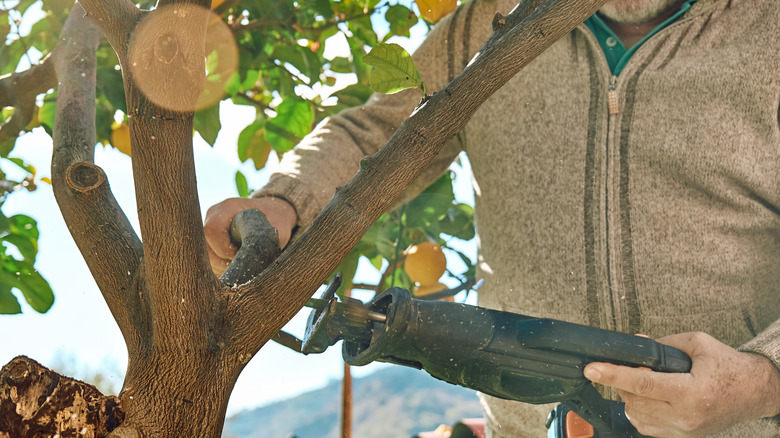If You Have These Trees In Your Yard, Prune Them In March
Mid to late winter is generally the best time to prune trees, according to our Garden Editor and in-house Master Gardener, Tiffany Selvey. "Most trees benefit from pruning while they're dormant because they heal more quickly during this period." Still, there are exceptions to every rule because there can be some disappointing downsides to pruning too early. She explains, "Some trees benefit from pruning in early spring due to specific disease issues or to help shift their energy toward strong new growth."
Certain trees, like oaks (Quercus spp.), should always be pruned before April to prevent oak wilt, a deadly fungal disease spread by beetles that become active later in the season. Crabapple (Malus spp.) and dogwood (Cornus spp.) trees also benefit from March pruning, as this promotes better airflow and reduces fungal risks. The key to successful pruning is knowing what to remove. Always focus on the "three Ds" — dead, diseased, or damaged branches — as well as crossing limbs that rub against each other. When done properly, March pruning sets up your trees for a healthy and vibrant growing season. Although we're focused on the month of March right now, it's worth considering the remainder of the season with other plants you should be pruning in spring to keep them happy and healthy.
Best practices for pruning trees in March
Spring pruning should always be done with a light hand, explains Tiffany Selvey. "Removing too many branches as it's breaking dormancy can cause weakness. This is especially true for flowering trees. If it is struggling to recover from pruning, it won't produce as many of those beautiful blooms." Crabapple trees should be trimmed to remove weak or crossing branches, allowing more sunlight to reach the canopy. Prune dogwoods while they're still dormant to prevent sap bleeding and increased disease susceptibility.
For those with fruit trees like apples or figs, pruning can directly impact fruit production. To maximize yields and prevent damage, avoid the common mistakes of fruit tree pruning. For fruit production, fig trees (Ficus carica) should be pruned after the last frost but before significant new growth appears. When it comes to pruning apple trees, do so as soon as possible, according to Selvey. "Prune young apple trees — those that aren't providing fruit yet — for shape and structure just before they break dormancy."
When pruning, avoid removing more than one-third of a tree's canopy at once, as excessive cutting can stress the tree and lead to weak, unproductive growth. If trees have already started budding, it may be best to postpone pruning until the tree enters dormancy again. A strategic approach will support your trees' healthy growth throughout the year.

